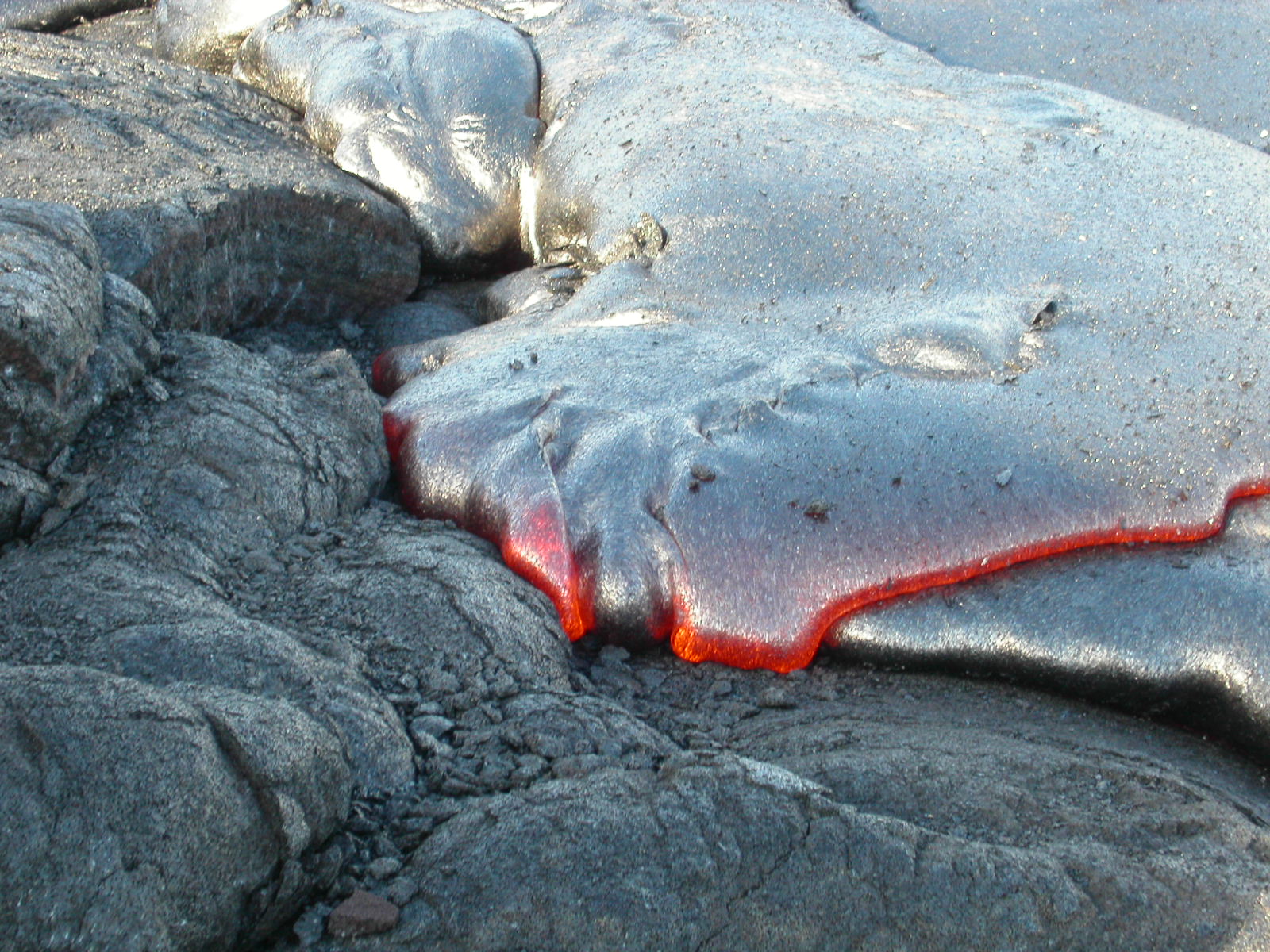
Molten smooth pahoehoe lava flow erupted by Kilauea volcano in Hawaii. Photo by user y5RZouZwNsH6MI, CC BY-SA 2.0 , via Wikimedia Commons
There is a video of Prince that I can’t stop watching. It’s just over an hour long, shot in grainy black-and-white. It looks like a surveillance tape. This is Prince in 1982, before 1999, before Purple Rain and Sign “O” the Times, before there were stadiums packed with people demanding something from him. Three months earlier, he opened for the Rolling Stones, wearing thigh-high boots and bikini briefs, and got chased off stage by an audience throwing garbage. Now he’s playing in suburban New Jersey for a crowd of college kids who don’t know how to process what they’re witnessing. It’s one of the most miraculous things I’ve ever seen.
The show starts in pulsing darkness, with an a capella gospel track. Above the choir we hear Prince clearly, his always startling baritone rolling up to a keening falsetto. “You’ve got to love your brother if you want to free your soul,” he sings. These are the last religious words that will be sung that night, but they’re a reminder that Prince is an artist who knows, like Madonna and Al Green and Marvin Gaye, that all the sexiest music is at least a little bit about God. Then the drums kick in. Prince’s strobe-lit silhouette flashes out of the darkness. His body looks enormous, which it was not. I’m reminded, strangely, that Prince was born epileptic, and that as a child he informed his mother—correctly, it turned out—that he wasn’t going to have seizures anymore. He’d been cured by an angel, he said.
It feels like there’s something private about what he’s doing up there, like we’re not supposed to be seeing this, like it’s a sin. The camera can’t contain him. He vanishes a few times, leaving an empty black square. When the camera pulls back, we realize he’s dropped to the floor, seeking an angle of even greater intimacy with his guitar. Over the course of the hour he seems to draw inward, choosing to ignore the teenagers shuffling clumsily around him. At several points, I think, he forgets the audience is there. But then he remembers, looks up, shoots his arms to the ceiling and poses for a beat before retreating again into his body, that place where he spins and jumps and grinds and, unasked, gives freely of himself.
—Charlie Lee
You can read Charlie Lee’s essay on migraines and miracles here.
Katia and Maurice Krafft spent decades recording volcanoes around the world. Director Sara Dosa transformed hundreds of hours of their film footage into the mesmerizing documentary Fire of Love, which I saw a few months ago in Toronto. The footage alone is a luminous marvel; never have I experienced such geologic intimacy from the screen. In Maurice Krafft’s archival narrations, we hear stylistic echoes of Werner Herzog—who, perhaps unsurprisingly, featured the volcanologists in his 2016 film Into the Inferno and this spring premiered his own cinematic dedication to them, The Fire Within. His delivery is so tonally epic that it verges on a comedic parody of itself. Dosa mines this comedy to generate a story that is at once profound and whimsical, capturing all the elements of falling in love—the glow, the warmth, the obsession.
—Sierra Crane Murdoch
You can read Sierra Crane Murdoch’s essay on Barry Lopez here.
William Forsythe is a staple of postmodern dance, an American choreographer who made his name in Europe during his tenure at Ballet Frankfurt. He brought ballet as George Balanchine had defined it into the twenty-first century—stretching the lines and angles of each movement past its limits, embracing the androgynous, cerebral, and electronic. Now, in something of an incredibly busy retirement, Forsythe has entered a choreographic partnership with the Boston Ballet, creating new dances and re-staging old ones. He knows the dancers well, and their symbiosis is obvious onstage. Boston Ballet boasts one of the most avant-garde and thoughtfully curated repertoires in the country. A few weeks ago, I went to the Boston Opera House three times for a program showcasing Forsythe’s Blake Works I and III, two ballets in a series set to music by James Blake.
Blake Works I premiered at the Paris Opera Ballet in 2016 and is rarely seen outside of the Palais Garnier. There is something French in the dancers’ stately carriage of their arms—and in the choreography that brings the entire company onstage. But Boston’s dancers added an American verve, thwacking their legs into the air and hitting each note with intensity. For Blake III, which premiered this season in Boston, a barre—an essential tool for class and training—was showcased onstage. This felt almost indecent, as though the company had been caught onstage in undergarments. The ballet became a sequence of pas de deux with the barre, the dancers torquing their hips and angling their bodies against it with each new step. (Lia Cirio, Lawrence Rhines, and Daniel Durrett were among the strongest dancers in Blake III, and Jeffrey Cirio took the stage like Baryshnikov in both acts.) Boston’s next season will include another new Forsythe ballet and a reprise of his celebrated Artifact Suite.
—Elinor Hitt, reader
from The Paris Review https://ift.tt/qsaY6Wi
Comments
Post a Comment